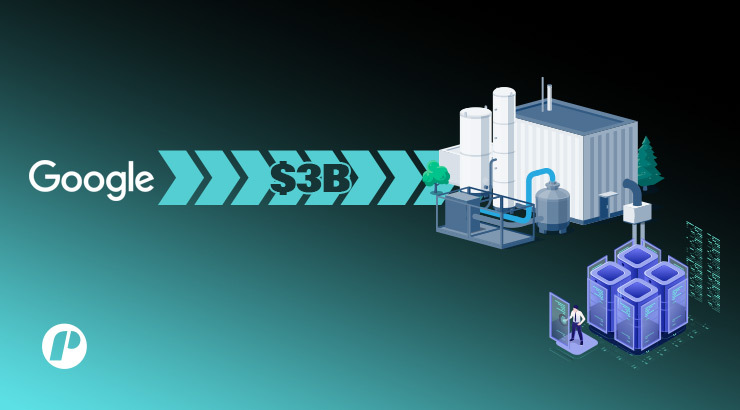
The race to harness fusion energy—the ultimate source of clean, limitless electricity—reached a definitive inflection point with the strategic alliance of Google DeepMind and Commonwealth Fusion Systems (CFS). This high-stakes technological collaboration dramatically accelerates the delivery of grid-ready fusion power. Therefore, it moves the technology firmly from the theoretical physics lab into the urgent, commercially driven realm of mega-project engineering. Furthermore, the partnership directly addresses the burgeoning power demands of advanced technologies. This includes the ever-increasing needs of artificial intelligence (AI) data centers worldwide. This integrated approach, blending cutting-edge software with hardware innovation, strongly positions the American private sector to secure the prize of fusion dominance over global rivals.
The DeepMind-CFS Nexus: Taming the 100 Million-Degree Star
The core challenge of magnetic confinement fusion (MCF) involves sustaining plasma stability at temperatures exceeding $100$ million degrees Celsius inside a magnetic cage. This complex, non-linear physics problem demands an AI-driven solution. This solution far surpasses the capabilities of traditional human-controlled systems. DeepMind answered this formidable challenge by developing TORAX, an open-source, differentiable plasma simulator built using the Google-developed JAX framework. This highly specialized software serves as a “digital twin” of the CFS SPARC demonstration reactor. It enables researchers to run millions of virtual experiments quickly and affordably. In essence, DeepMind-CFS created an AI-powered flight simulator to train control systems for a machine that will mimic stellar processes on Earth. Consequently, this capability dramatically compresses decades of traditional research into a much shorter, more efficient engineering development cycle.
AI and Simulation: The Engine of Acceleration
TORAX, the revolutionary AI tool, has become essential in the daily operational workflows of the CFS engineering and physics teams. This simulator’s differentiability enables advanced reinforcement learning algorithms to compute precisely how minor adjustments to hundreds of magnetic coils and heating inputs will affect the highly sensitive plasma. Additionally, DeepMind is leveraging its AlphaEvolve architecture to discover entirely new control strategies that human intuition alone could not conceive quickly enough. Consequently, the AI functions as an “AI co-pilot,” autonomously optimizing the plasma shape to maximize the crucial fusion gain (Q). It simultaneously minimizes the energy required for confinement. This strategic digital optimization significantly increases the likelihood that SPARC will achieve the net energy milestone on its first operational day. Therefore, the successful application of AI validates the core technical plan of DeepMind-CFS.
Commercial Milestones: De-Risking Future Power
CFS has successfully translated technological confidence into market confidence, securing a verifiable path to commercial deployment underpinned by significant financial and corporate commitments. The company recently closed its impressive $863 million Series B2 funding round, bringing its total capital raised to an industry-leading $3 billion in private fusion investment. Indeed, investors clearly acknowledge that this huge capital commitment accelerates the delivery of dispatchable clean power to the global grid. It subsequently reduces scientific risk. Moreover, the project timeline remains remarkably aggressive, targeting first plasma in 2026 with the critical net-energy milestone (Q>1) expected in 2027. This ambitious schedule firmly establishes the DeepMind-CFS partnership as a global frontrunner in the highly competitive fusion development landscape. This sustained capital infusion proves the viability of the private-sector-led approach to achieving commercial fusion energy.
Power Offtake and Market Validation
The strongest signal of commercial maturity is the signed Power Purchase Agreement (PPA) with Alphabet Inc., the parent company of Google DeepMind. This landmark deal commits Google to purchasing 200 MW of power from CFS’s planned first commercial plant, ARC, scheduled to operate in Virginia in the early 2030s. In fact, this commitment secures half of the ARC plant’s initial 400 MWe output. It provides significant market validation for fusion energy as a viable utility solution. Ultimately, this power will help decarbonize Google’s rapidly expanding data center infrastructure. It directly links the energy consumer to the energy innovator in a closed loop of sustainable growth. This PPA model will likely serve as the blueprint for future corporate clean power agreements across the energy-intensive technology sector, benefiting the entire DeepMind-CFS ecosystem. Therefore, the deal shifts fusion from a purely scientific pursuit into a mature commercial offering.
Tech Breakthroughs: The High-Temperature Superconductor Advantage
The SPARC reactor’s fundamental advantage lies in its innovative use of High-Temperature Superconducting (HTS) magnets. These magnets represent a genuine paradigm shift in magnetic confinement design. These immensely powerful magnets enable CFS to confine the fusion plasma within a significantly smaller, more compact tokamak. Specifically, the successful 2021 test of a prototype magnet coil, achieving a world-record magnetic field of 20 Tesla (T), confirmed the physics basis for this compact design. This smaller footprint drastically reduces the required capital cost for construction. It makes the eventual ARC reactor economically feasible compared to earlier, larger designs, such as the international ITER project. Therefore, the combination of hardware miniaturization enabled by HTS technology and software optimization driven by DeepMind’s AI defines the specific path to commercial fusion energy. This integrated technological strategy allows the DeepMind-CFS collaboration to push reactor performance beyond usual limits.
The successful commercialization of fusion energy promises to unlock immense global economic growth. It fundamentally alters the path of industrial and climate policy. Current macroeconomic forecasts project that the rapidly growing nuclear fusion energy market will reach $40–$80 billion by 2035. It could conservatively exceed $350 billion by 2050. Moreover, these forecasts consider the escalating global demand for clean, firm, and dispatchable power to support massive electrification efforts across all continents. Significantly, the availability of reliable, affordable fusion power is expected to reduce the overall cost of decarbonization by trillions of dollars globally. This drives a substantial $68 trillion boost to global GDP by 2050. Furthermore, this entirely new energy sector will spawn highly specialized supply chains and manufacturing jobs, particularly in advanced materials science and high-tech component production. This economic momentum strongly justifies the high levels of venture capital and corporate investment in this endeavor.
The LCOE Challenge and Strategic Supply Chain
However, the long-term viability of fusion hinges on its ability to achieve a highly competitive Levelized Cost of Electricity (LCOE) against mature baseload power technologies. CFS aims to drive costs down to the competitive target of approximately $80–$100/MWh in the post-2040 deployment window through modularity and high-volume manufacturing. To accelerate this crucial process, CFS has strategically secured key supply chain agreements. This includes a deal with Materion for beryllium fluoride, a critical component for the ARC reactor’s molten salt blanket. This proactive focus on securing specialized advanced materials mitigates future risk. It strengthens the domestic industrial foundation needed to scale up fusion infrastructure. Ultimately, controlling capital expenditure is the final barrier to fusion’s success as a reliable baseload power source.
| Metric | Detail | Significance |
|---|---|---|
| Partners | Google DeepMind & Commonwealth Fusion Systems (CFS) | Strategic Alliance, AI Fusion Acceleration |
| Core AI Tool | TORAX Simulator (JAX-based, Open-Source) | Differentiable Plasma Simulation, Reinforcement Learning |
| Hardware | SPARC (Demonstration Reactor) | High-Temperature Superconducting (HTS) Magnets |
| HTS Magnet Record | 20 Tesla (T) Field Strength (Achieved 2021) | Compact Tokamak Design, Capital Cost Reduction |
| Total CFS Funding | ≈$3 Billion USD (as of 2025) | Private Fusion Investment, Venture Capital |
| Net Energy Target | First Plasma: 2026; Net Energy (Q>1): 2027 | Commercialization Timeline, Fusion Gain |
| Commercial Plant | ARC (Chesterfield County, VA) | Baseload Power Source, Grid-Scale Deployment |
| Google Commitment | 200 MW Power Purchase Agreement (PPA) | Power Offtake, AI Data Center Energy Demand |
| Geopolitical Rival | China (Estimated ≥$6.5 Billion state investment since 2023) | Fusion Dominance, Technological Supremacy |
| Market Potential | ≥$350 Billion USD by 2050 | Economic Surge, Decarbonization Value |
Geopolitical Edge: The US-China Duel for Energy Supremacy
The rivalry to achieve commercial fusion first represents a critical new front in the technological and geopolitical competition between the United States and China. China maintains an aggressive, highly centralized, state-backed approach. It reportedly invests an astounding $1.5 billion annually in fusion research. Therefore, Beijing’s total state investment in fusion facilities and research has exceeded $6.5 billion since 2023. Projections aim for a state-led industrial prototype by 2035. This immense, government-driven funding effort significantly outpaces the recent U.S. government fusion budget allocations. It creates a clear challenge to Western leadership. Consequently, the success of the U.S. model relies entirely on private-sector breakthroughs from companies like CFS and Helion. These companies collectively dominate the private fusion investment landscape. This critical differential highlights the divergence in national technological strategies.
Global Influence and Strategic Imperative
The nation that achieves fusion dominance first will secure unparalleled global influence over the future of global energy security. Fusion energy offers strategic independence. It drastically reduces reliance on volatile fossil-fuel markets and on vulnerable international supply chains. Furthermore, the U.S. government, through initiatives such as the DOE Milestone-Based Fusion Development Program, actively supports private-sector growth to maintain its technical edge. This prevents a technology transfer leak. Ultimately, a U.S.-led deployment of fusion energy could become a powerful diplomatic tool. It would export clean power solutions and strengthen alliances worldwide. However, should China prevail, Beijing could integrate fusion into its Belt and Road Initiative. It would leverage clean energy access to expand its sphere of geopolitical influence among developing nations. This makes the AI-fusion race a high-stakes competition for future economic and military power.
Cyber Shields and AI Resilience: Securing the Digital Reactor
The deep reliance on DeepMind’s AI for real-time, complex plasma control introduces novel and sophisticated cybersecurity vulnerabilities for future power grid infrastructure. Fusion facilities require impregnable defenses. A successful adversarial attack could subtly corrupt the reactor’s sensor data, leading to a system disruption or severe damage. Therefore, the development of AI-driven defenses must proceed in lockstep with the reactor’s technical buildout. This ensures overall system integrity and plant safety. This necessity requires integrating security-by-design principles directly into the TORAX simulation framework. This creates a secure AI-fusion digital convergence platform. The integration of AI, while solving one problem, simultaneously creates a new front line for technological defense.
Proactive Defense and Regulatory Focus
Leading fusion security strategies now focus on leveraging machine learning for anomaly detection. This instantly flags minute deviations in operational data that might indicate a sophisticated cyber intrusion. Engineers are also protecting the valuable intellectual property through advanced encrypted simulations of control algorithms. This recognizes the profound strategic value of the AI technology. Finally, international bodies, including the IAEA, are urgently developing specific cybersecurity norms and regulatory frameworks for new nuclear technologies like fusion. This holistic approach, blending physical safeguards with digital resilience, provides the confidence needed for full-scale commercial deployment. It validates the safety and security of the limitless clean energy promised by the DeepMind-CFS partnership.
If you liked this post make sure to share it!








